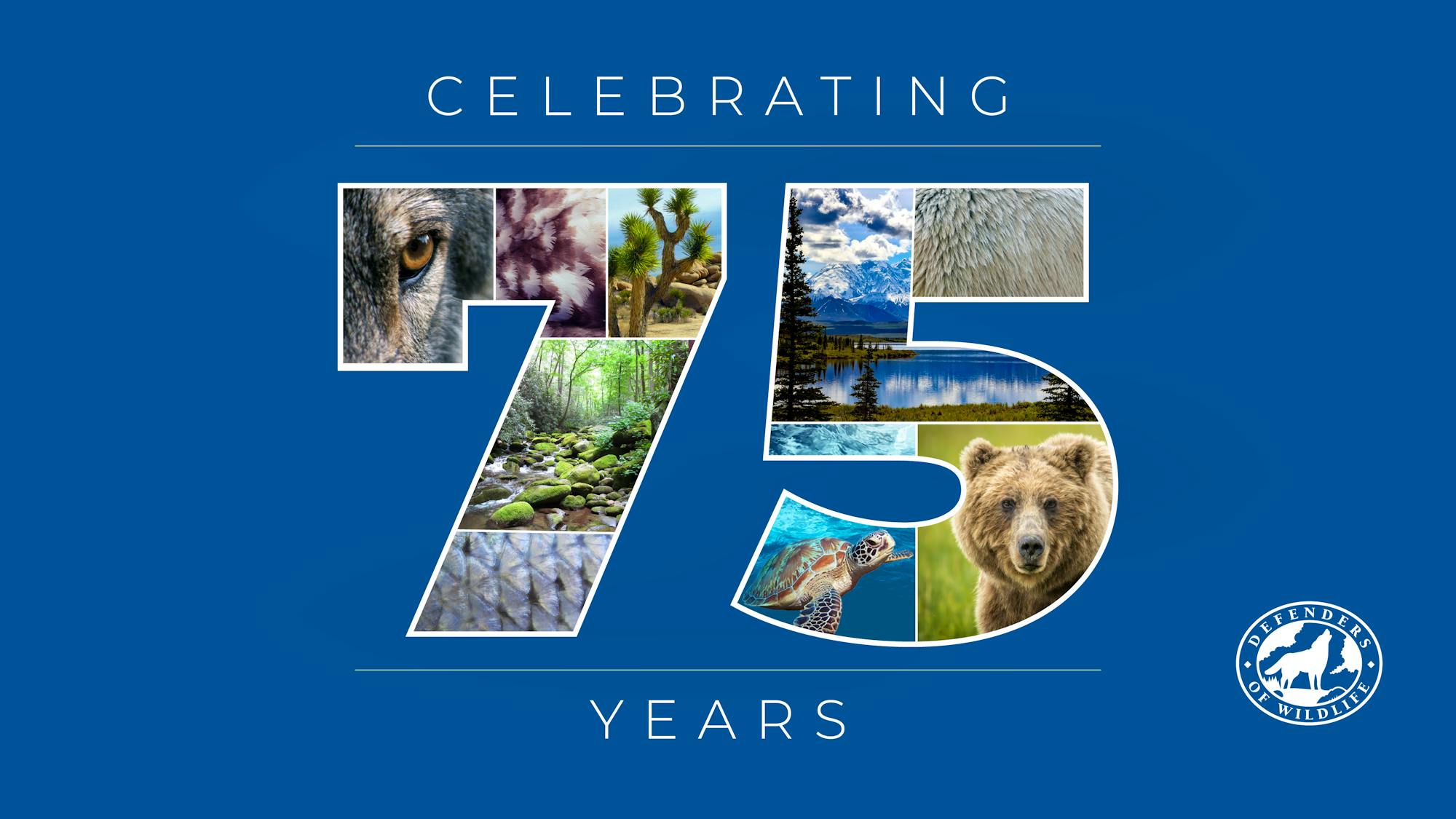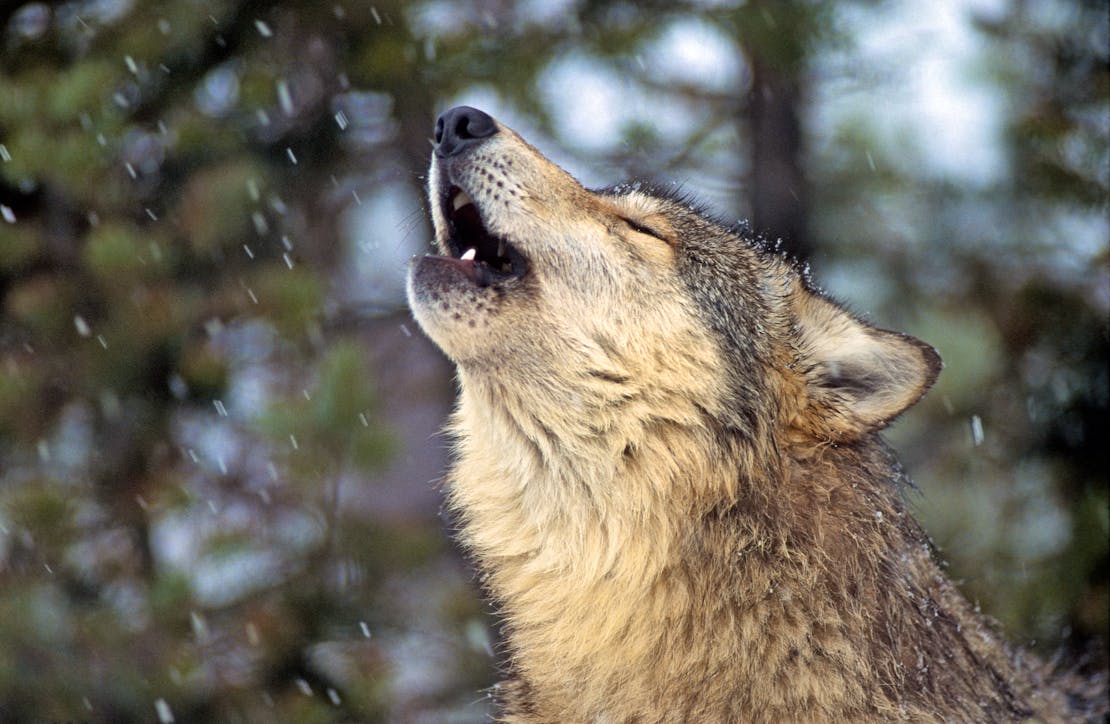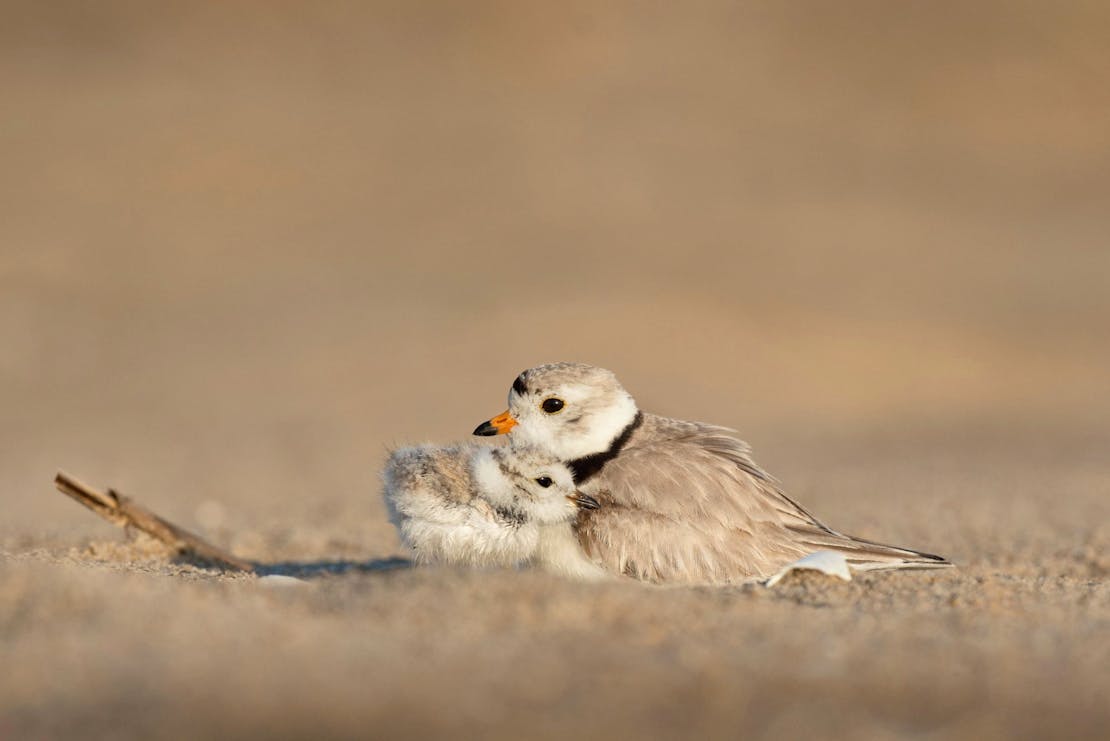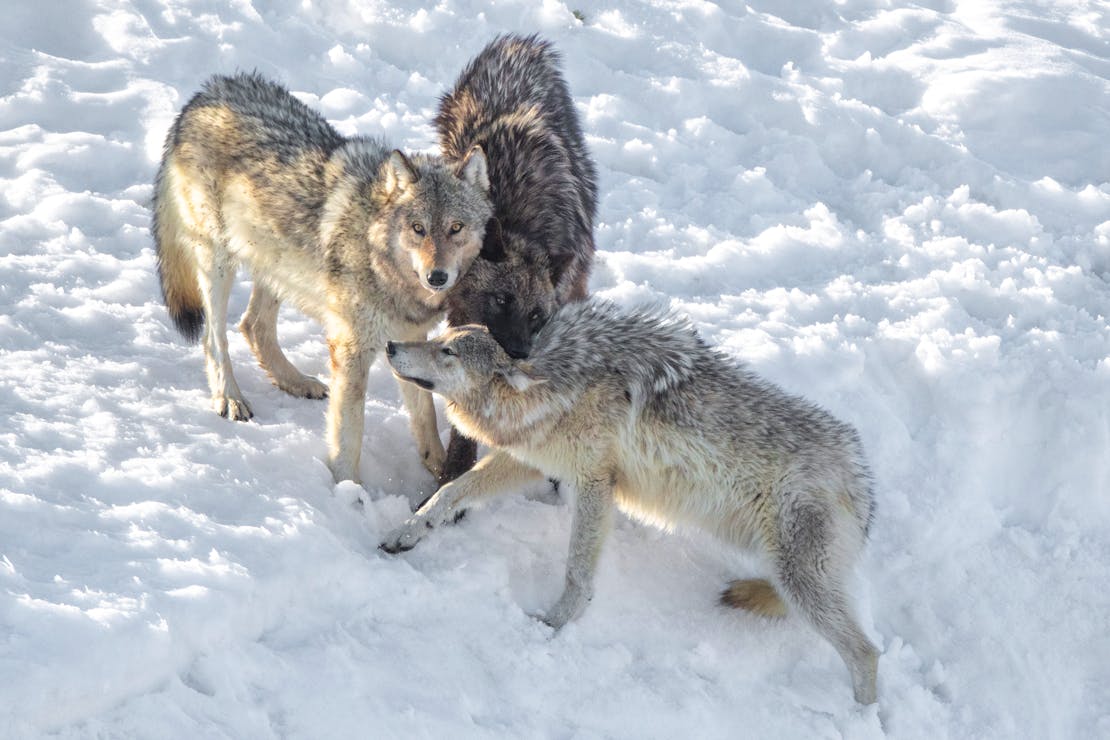In 2022, Defenders celebrated its 75th anniversary. We’ve come a long way since 1947, when most people took wildlife for granted, believing numbers were infinite. Many viewed nature as something to manage, control or dominate, and they thoughtlessly killed what they feared—including wolves. As we reflect on 2022, Defenders of Wildlife wants to acknowledge the visionaries all those years ago who did recognize the importance of protecting species and wildlife's role in our society. They laid the groundwork for decades of achievements in wildlife conservation for which all our members can be deeply proud.
In that vein, much of our work this year was focused on stemming biodiversity loss and efforts to restore vital wildlife protections. Before the hard work continues in 2023, we’d like to look back on some of the progress made for wildlife in 2022. Here are 10 wildlife wins:
#1 Northern Long-Eared Bat Listed at Long Last
The U.S. Fish and Wildlife Service's (FWS) listing of the northern long-eared bat as an endangered species this year was a hard-won reclassification from its threatened status. The decision follows a successful lawsuit filed by Defenders and the Center for Biological Diversity against the FWS due to the agency’s failure to protect the imperiled species. The endangered listing decision for the northern long-eared bat legally recognizes what the science has been telling us for years—that white-nose syndrome has caused catastrophic population declines, but also that human activities such as habitat destruction and improperly sited wind energy projects are also playing a role we can’t ignore.
#2 Winning Bonnet Carré Legal Battle to Protect Wildlife
Thanks to a legal victory for Defenders, floods of nutrient pollution laden waters won’t pour into important habitats for threatened species in Louisiana.
The Bonnet Carré Spillway is a flood control operation in the Lower Mississippi Valley, in St. Charles Parish, Louisiana. When it’s opened, the Spillway diverts trillions of gallons of floodwaters from the Mississippi River into Lake Pontchartrain and the Mississippi Sound. This diverted water creates a massive muddy plume, decreases salinity levels and carries excessive levels of nutrients, which in turn can lead to the growth of harmful algal blooms and trigger “hypoxic” or “anoxic” (low oxygen) conditions. This is harmful for a variety of threatened and endangered species including the Gulf sturgeon, manatees, Kemp’s ridley, loggerhead and green sea turtles, and threatened birds such as the piping plover and red knot.
Defenders successfully argued in court that the U.S. Army Corps of Engineers must rigorously study and consult other wildlife agencies (such as the U.S. Fish and Wildlife Service and NOAA Fisheries) about the effects that Spillway openings may have on threatened and endangered species and critical habitats, before flood waters are released. The Corps had previously only consulted these agencies after waters had been released—by which time it was too late to avoid impacts on wildlife.
This is a big win for sensitive estuarine and marine habitats in Lake Pontchartrain and the Mississippi Sound, as well as the imperiled species that depend upon them.
#3 More Red Wolves in the Wild
In the early 1970s, because of the declining Red Wolf population, the U.S. Fish and Wildlife Service began capturing Red Wolves for a captive breeding program. The species continued declining and in 1980 the Red Wolf was declared to be extinct in the wild. But between 1987 and 1994, more than 60 adult Red Wolves bred in captivity were released in eastern North Carolina. This was the first time a large carnivore had been declared extinct in the wild and then reintroduced in the United States. By 2012, there was an estimated population as high as 120 Red Wolves in North Carolina.
Unfortunately, in 2015 the FWS stopped releasing Red Wolves and the population declined dramatically, largely from being shot and struck by vehicles, until it was estimated that there were just seven wolves left. Defenders and other conservation organizations sued the FWS, and the courts ruled that the government had been acting illegally and Red Wolf releases should resume. As a result, nine captive-born Red Wolves were released in 2021 and eleven were released in 2022. There was more hopeful news in April 2022 when a litter of pups was born—five of which have survived. This new litter is encouraging as the successful breeding of these wolves in the wild is essential for the recovery of the species. There are now an estimated 19-21 wild Red Wolves in the population with plans for up to nine more wolf releases in 2023.
#4 Bison Restoration with Indigenous Communities
In December last year, Fort Peck Tribes, the InterTribal Buffalo Council and Defenders of Wildlife facilitated the transfer of 56 Yellowstone bison to the lands of the Yakama Nation in Washington and the Modoc Nation in Oklahoma. The transfer marked the first time two large intact families of bison were transferred under the Bison Conservation Transfer Program. Each Tribe received a family of 28 bison. This year, we continued this work, helping with the transfer of 28 Yellowstone bison to the Fort Peck Indian Reservation in Montana, marking the sixth successful transfer of bison to the Assiniboine and Sioux Tribes of Fort Peck since 2019.
Defenders also contributed to a scientific study that shows how critical bison restoration is to the health and livelihood of Tribal Nations and how it will revitalize a major U.S ecosystem. The study discussed how bringing bison back to Tribal lands can help restore the Northern Great Plains prairie ecosystem, as well as addressing the issues of food insecurity and food sovereignty for Native Nations. With high rates of unemployment and 25% living below the poverty line, Native Americans are twice as likely to have issues with food security. Bison herds can generate both income and food in addition to the revitalization of historic cultural connections to the bison. Bison restoration may also help to mitigate adverse impacts to traditional agricultural systems due to climate change.
#5 Defending California Bumble Bees
California’s High Court decided once and for all that bees can, in fact, be protected under the California Endangered Species Act. This was a huge win as many of these species are important pollinators and essential to the proper functioning of ecosystems and strengthening biodiversity.
In 2018, several environmental groups, including Defenders, petitioned to list four species of bumblebee as endangered in California as they had become threatened by pesticide use and other human activities: Crotch’s bumblebee, Franklin’s bumblebee, Suckley’s cuckoo bumblebee and the Western bumblebee.
The California Fish and Game Commission voted to begin the listing process in 2019 but was sued by a consortium of California's big industrial agricultural interests. The agricultural companies argued that the California Endangered Species Act only protected “native species or subspecies of a bird, mammal, fish, amphibian, reptile or plant” so invertebrate species like bees couldn’t be protected. However, Defenders and its allies appealed, having found a loophole in the law. The California ESA defines fish as “a wild fish, mollusk, crustacean, invertebrate, amphibian.” This meant that insects, spiders and other invertebrates are considered to be “fish” under the law. The Court of Appeals ruled unanimously in favor of the conservation organizations and recognized that insects could be listed as endangered.
#6 Protecting Gray Wolves and Reducing Human-Wildlife Conflicts
Defenders won a huge victory for gray wolves when we legally challenged the Trump Administration’s delisting of gray wolves from the Endangered Species Act (ESA). The court ruled in Defenders’ favor and ESA protections were reinstated for wolves in a large portion of the lower 48 states. This ruling affected gray wolves in at least 44 states, most prominently in the western Great Lakes, the central Rockies and Pacific Coast. It helps protect wolves from hunting, trapping, poisoning and other lethal measures. In other good news for gray wolves, the Washington State population saw a 16% increase, and now stands at 206 wolves.
Defenders has also been heavily engaged in outreach activities to reduce human-wildlife conflict including hiring range riders and organizing volunteers to watch livestock in Colorado. We set up 11 range rider projects in Arizona and New Mexico, in addition to meetings and workshops with ranchers in Colorado and Oregon to promote coexistence with wolves and other predators. Defenders is also partnering with the Indian Nations Conservation Alliance to support new conservation projects aimed at reducing wolf-livestock conflicts and improving range monitoring and management on Tribal lands across the Southwest.
Finally, in response to the aggressive anti-wolf policies being implemented in Idaho, Montana and Wyoming, Defenders and partners submitted a petition to the U.S. Forest Service to provide protections for wolves in designated wilderness areas, preventing wolf killings by professional and subsidized hunters and trappers in the nearly eight million acres of designated wilderness areas in Idaho and Montana.
#7 Public Support for the National Wildlife Refuge System
New public opinion research from Defenders of Wildlife revealed that 80% of voters polled support increasing funding for the National Wildlife Refuge System, the nation’s only system of lands dedicated to wildlife conservation. Due to chronic underfunding, the National Wildlife Refuge System has long been starved of adequate management resources. A growing backlog of repairs and the loss of more than 1,000 staff have severely undermined the U.S. Fish and Wildlife Service’s ability to fulfill its mission. Despite these challenges, nearly 600 refuges across the country support roughly 60 million visits per year. Broad majorities of voters in Florida, southern California and the intermountain West across party lines and geographies support an investment of $1.5 billion annually for wildlife refuges.
National wildlife refuges are critical safe havens for native wildlife and the only places in the world where some species on the edge of extinction live. Roughly one-third of federally listed species rely on wildlife refuges, and nearly all major cities are located within an hour’s drive of a refuge, putting nature within reach of millions. Survey results demonstrated that voters recognize the value of the System, with water quality, habitat and protection of at-risk species viewed as key refuge benefits. Voters deeply value the protection of iconic species, such as wolves and grizzly bears, in refuges.
#8 Protections for Horseshoe Crabs and Red Knots
The decades-long effort to protect Delaware Bay horseshoe crabs and the concentrations of red knot shorebird that rely on their tiny eggs avoided a serious setback in 2022. The Atlantic States Marine Fisheries Commission had proposed resuming the harvest of female crabs for industry use as bait for fishing pots and traps. For 10 years, no harvest of females has been allowed, in part to help the threatened red knots, which gorge on the eggs on their flight from the bottom to the top of the Americas. Just this year, roughly 12,000 red knots were documented in Delaware Bay, down from 30,000 three years ago, and nearly a hundred thousand three decades ago. By any metric, the red knot is now on its last leg and lacking critical resiliency.
In South Carolina, contractors for Charles River Laboratories harvest and live-bleed roughly 150,000 crabs for use in the biomedical industry. For decades, these harvesters worked Cape Romain’s remote islands, salt marshes and tidal creeks, depriving shorebirds of what likely amounted to hundreds of thousands of crabs that would have otherwise provided billions of eggs. That wrong has finally been righted, thanks to litigation brought by Defenders and the Southern Environmental Law Center.
#9 International Trade Protections for Overexploited Species
The overexploitation and illegal trade of species is one of the leading causes of the biodiversity crisis and a major driver of extinction. This year, Defenders attended the 19th Conference of the Parties to the Convention on International Trade in Endangered Species of Wild Fauna and Flora (CITES CoP19) and presented a number of proposals to help protect threatened species from overexploitation by international trade.
Defenders of Wildlife staff had worked on these proposals for months, and sometimes even years, leading up to the meeting, but the hard work paid off. In a landmark victory for marine biodiversity and increased (and desperately needed) regulation of the shark fin trade, more than 100 species of sharks and rays, including requiem and bonnethead sharks, guitarfish and freshwater rays endemic to Brazil, were listed on Appendix II, controlling and limiting their trade. Despite early opposition from the European Union, the proposal to protect 158 species of glass frogs also passed with majority support.
The EU also resisted proposals to protect 52 species of aquatic and terrestrial turtles and 21 species of horned lizards. Both turtles and horned lizards have experienced staggering increases in international trade in the past decade. However, after it became clear that there was wide international support, the proposals passed by consensus. The CITES meeting was not only a major step towards controlling the overexploitation of hundreds of imperiled species, but it was also a powerful display of cooperation between conservation groups from around the world and a successful collaboration between Defenders of Wildlife and many countries in Central America seeking to protect their own biodiversity.
#10 Wildlife Nation with Jeff Corwin
Our television series, Wildlife Nation with Jeff Corwin, completed a terrific 16-episode season highlighting a variety of remarkable wildlife across the country and showcasing Defenders’ work to conserve and protect imperiled species. Premiering in October 2021 on Saturday mornings, episodes aired on ABC stations nationwide. The show covered species from manatees to corals, and sea turtles to crocodiles, providing information to educate and empower future generations to work together to preserve and protect the planet's most astounding wildlife and their natural habitats. In the first six months after launching, more than 25 million viewers tuned in to watch, with each weekly show averaging nearly 1.3 million viewers. We also partnered with Wildlife Nation to produce a wealth of additional material that we are using to support our advocacy work and to spotlight our efforts to tackle the biodiversity and climate crises.










